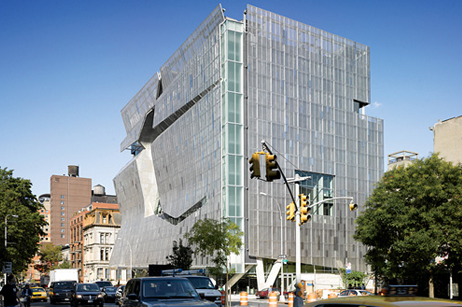41 Cooper Square

The Academic Building has achieved a LEED Platinum rating, the first for an institutional building in New York City. It employs standard methods of construction where a reinforced concrete framing is cast on site and enclosed in an aluminum and glass curtain wall. The operable perforated stainless steel skin is offset from the glass but still attached to the main frame. Innovative technologies are introduced into the building system to maximize energy efficiency. Radiant heating and cooling ceiling panels provide a more efficient means of achieving thermal comfort, a green roof helps insulate the building and collects storm water, and a cogeneration plant provides additional power but recovers waste heat. The full-height atrium provides interior day lighting to the building core and the semi-transparent nature of the façade has allowed for seventy-five percent of the occupied spaces to be naturally lit.
Thom Mayne and the Cooper Union have created an academic building that reflects the institution’s goals and aspirations. By incorporating innovative sustainable technologies into the function and architecture of the building, Cooper Union has set a new standard for the construction and design of institutional buildings. Similar to its mission of providing free high quality education, the building itself is didactic with its selective transparencies and sustainable façade. Nicolai Ouroussoff, architectural critic of The New York Times, has praised the building as being an “example of how to create powerful architecture that is not afraid to engage its urban surroundings” and “a bold architectural statement of genuine civic value.


